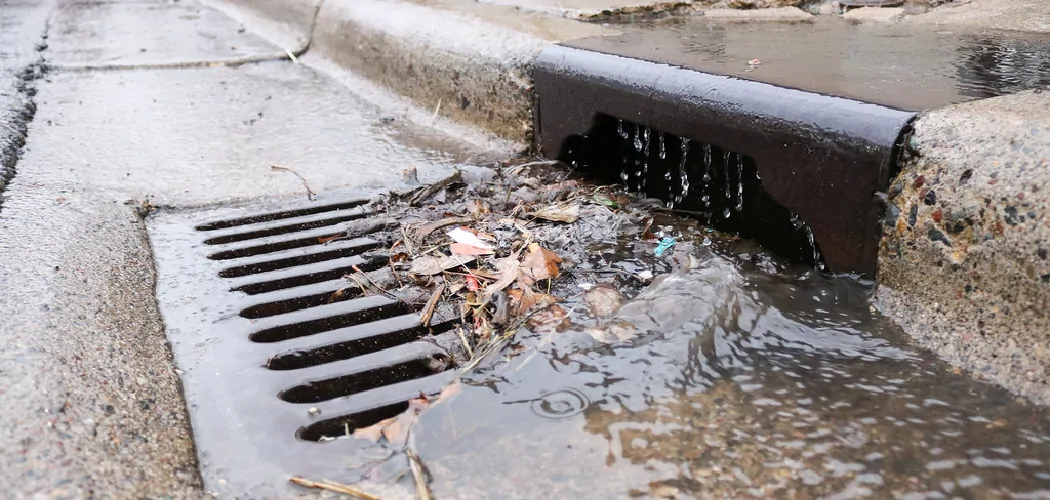Have you ever had a problem with street drains clogging up outside your home? Are you unsure how to unclog them safely and effectively? You’re not alone; it’s estimated that nearly 90% of all drainage systems become blocked at least once in their lifetime. The good news is that clearing a blocked drain is simple as long as you have the right tools and knowledge on how to unclog a street drain to get the job done.
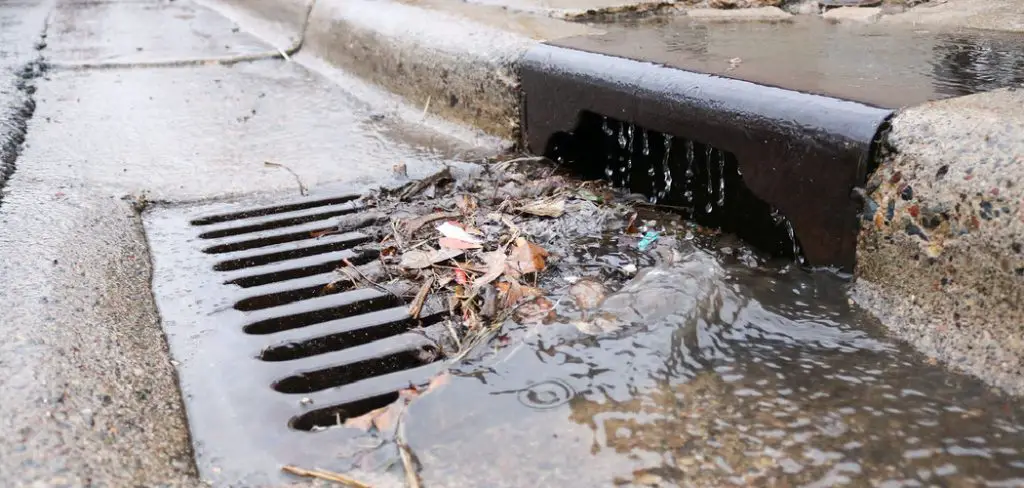
In this blog post, we’ll teach you easy-to-follow steps to help take care of stubborn blockages quickly – no matter what type of street drain you have! So, if your road has turned into an obstacle course due to persistent puddles, don’t despair; read on for our tips on how to unclog your street drain today.
Necessary Items
Before you start unclogging your street drain, there are a few items that you will need to gather. Some of these may be your household items, while others may require a quick repair trip to the hardware store. Here’s what you’ll need:
- Protective gear: While not essential, it’s always a good idea to protect yourself with gloves and eye protection to avoid potential hazards.
- Plunger: A traditional sink plunger is usually sufficient for unclogging small street drains.
- Drain snake/auger: These tools are designed to clear blockages in pipes and drains. Different sizes are available, so choose one appropriate for street drains.
- Wet/dry vacuum: If you have a powerful wet/dry vacuum, it can be used to suck out any debris from the drain.
- Boiling water: This is an effective and natural way to dissolve certain types of blockages, such as grease or soap scum.
10 Steps on How to Unclog a Street Drain
Now that you have all the necessary items, here’s what you need to do:
Step 1: Inspect the Drain
Before attempting to unclog a street drain, inspecting and identifying the cause of the blockage is essential. It could be caused by leaves, debris, or even tree roots. Identifying the problem will help you choose the proper method for unclogging.
Step 2: Clear any Debris from Around the Drain
Use a shovel or broom to clear away any visible debris around the drain. This will prevent it from entering and further clogging up the drain during unclogging. Use a hose to remove any smaller debris that’s too difficult to remove by hand.
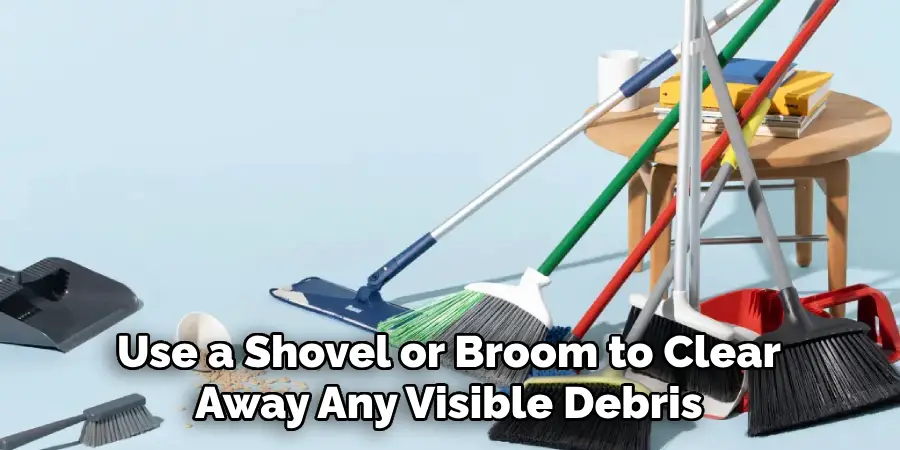
Step 3: Use a Plunger
Place the plunger over the drain and pump it up and down for about one minute. This will create suction, which can help dislodge minor blockages. Cover the second drain with a stopper or wet cloth if you have a double-bowl kitchen sink.
Step 4: Try Boiling Water
If the blockage is caused by grease or soap scum, carefully pour a pot of boiling water down the drain. The heat will help dissolve these clogs and clear the way for better drainage. Be careful not to burn yourself in the process.
Step 5: Use a Drain Snake/Auger
Insert the drain snake/auger into the drain and push it in as far as possible. Once inside, rotate the tool clockwise while moving it further in. This will help catch any debris that’s causing the blockage. Keep turning and pushing until you feel resistance.
Step 6: Pull out the Debris
Slowly pull out the drain snake/auger while still rotating it. This should catch onto any debris, allowing you to pull it out of the drain. Repeat this step a few times until no more debris is removed.
Step 7: Use a Wet/Dry Vacuum
If you have a powerful wet/dry vacuum, you can use it to suck out any remaining debris from the drain. Simply place the nozzle over the drain and turn on the vacuum. Be careful not to let any small pieces of debris fall back into the drain.
Step 8: Flush with Water
After removing all visible blockages, flush the drain with water to clear out any remaining debris and ensure it drains properly. If the water is still slow to drain, you may need to repeat some of the previous steps.
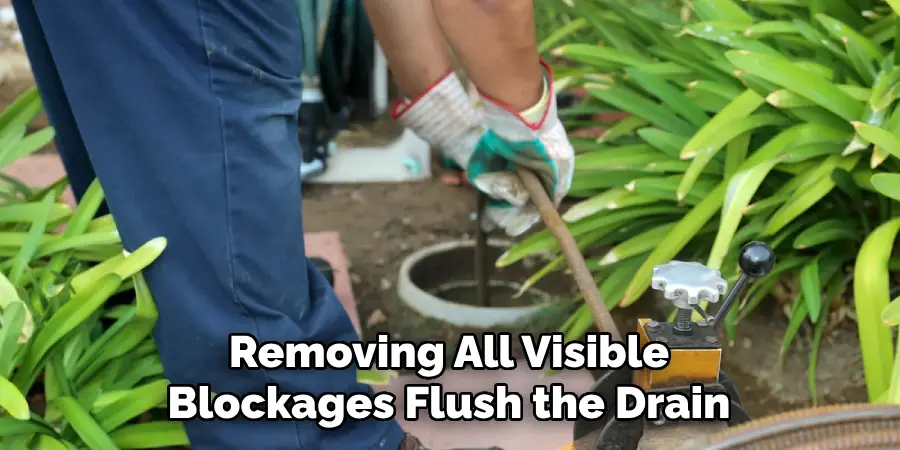
Step 9: Use a Chemical Drain Cleaner
If all else fails, you can try using a chemical drain cleaner. These products are usually effective at dissolving most types of blockages but should be used as a last resort due to their harsh chemicals.
Step 10: Call a Professional
If none of the above methods work, it’s best to call a professional plumber. They have the tools and expertise to handle stubborn blockages and ensure your street drain is fully cleared and functioning correctly.
Unclogging a street drain can be a manageable task. You can easily tackle any blockage and restore proper drainage with the right tools and knowledge. Always wear protective gear, inspect the drain before starting, and use these steps as a guide.
By following these tips, you’ll be able to keep your street free from clogs and avoid potential flooding issues in the future. So don’t let a blocked drain ruin your day – follow these steps and get your street back to normal in no time!
8 Things to Avoid to Prevent Clogged Street Drains
While knowing how to unclog a street drain is important, prevention is always better than cure. Here are some things you should avoid doing to prevent clogs in the first place:
1. Dumping Grease or Oil Down the Drain
Grease and oil should never be poured down the drain, as they can solidify and create stubborn clogs. Instead, let them cool and dispose of them properly in the trash.
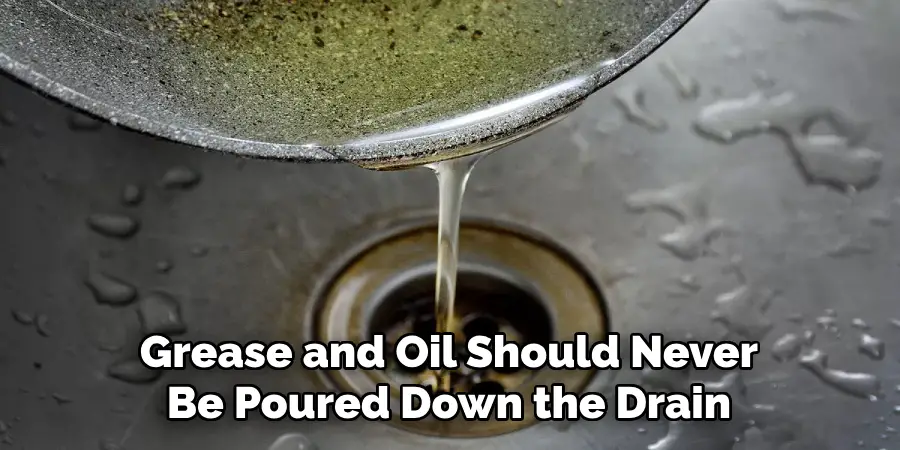
2. Flushing Non-Biodegradable Items
Items such as baby wipes, sanitary products, and paper towels should never be flushed down the toilet or washed down the drain. They can get caught in pipes and cause blockages.
3. Neglecting Regular Drain Maintenance
Take action before your street drains are completely clogged. Regularly inspect and clean them to prevent more significant issues from occurring.
4. Allowing Leaves and Debris to Accumulate
Leaves, twigs, and other debris can quickly enter street drains and cause major blockages. Make sure to clear away any visible debris around the drain regularly.
5. Planting Trees and Shrubs Near Drains
Tree roots can grow and invade pipes, causing significant blockages. Avoid planting trees and shrubs near street drains to prevent this from happening.
6. Heavy Rainfall Runoff
During heavy rainfall, significant runoff can enter street drains and cause clogs. Clear away any debris around the drain before heavy rain to prevent this.
7. Improperly Installed Storm Drains
Improper installation of storm drains can lead to significant clogs and flooding. Hire a professional to install them correctly and regularly check for any signs of issues.
8. Ignoring Warning Signs
If you notice slow drainage, gurgling noises, or foul smells coming from your street drain, addressing the issue before it becomes a significant clog is essential. Pay attention to these warning signs and take action as soon as possible.
By avoiding these common mistakes, you can help prevent clogs in street drains and keep them functioning properly for years. Remember, a little prevention goes a long way!
Frequently Asked Questions
How Often Should I Clean My Street Drains?
Inspecting and cleaning your street drains at least twice a year or more frequently if you live in an area with heavy foliage or rainfall is recommended.
What Should I Do If the Clog is Too Stubborn?
If you cannot clear the clog using the abovementioned methods, it’s best to call a professional plumber. They have specialized tools and knowledge to tackle stubborn clogs safely and effectively.
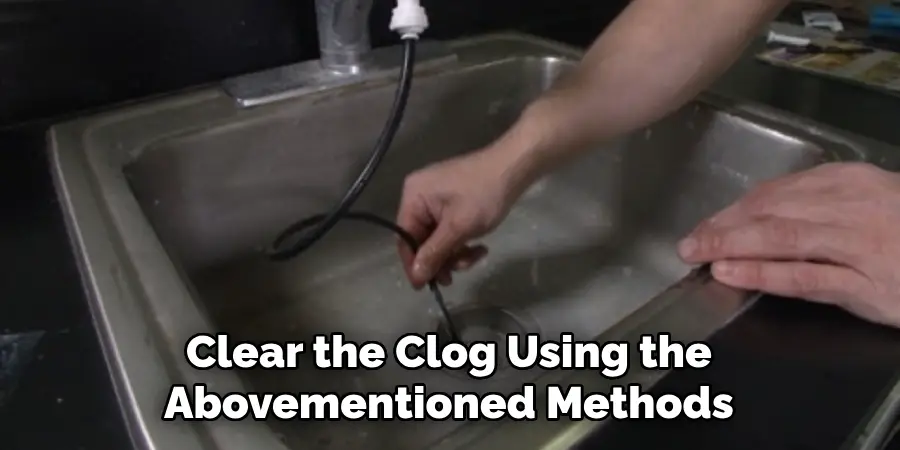
Can Street Drain Clogs Cause Flooding?
If left untreated, street drain clogs can cause flooding and potentially damage properties. This is why addressing clogs immediately is essential to prevent any major issues.
Is It Safe to Use Chemical Drain Cleaners?
Chemical drain cleaners can effectively dissolve clogs, but they should always be used as a last resort due to their harsh chemicals. Follow the manufacturer’s instructions carefully and wear protective gear when using them.
Remember, prevention is critical to avoiding clogs in street drains, so following these tips can save you time, money, and potential headaches in the future. Knowing how to maintain your street drains and what to avoid correctly can keep them functioning smoothly for years.
Conclusion
Clogged street drains can be a significant inconvenience, but they can easily be unclogged with the right tools and knowledge. Remember to wear protective gear, inspect the drain before starting, and follow our step-by-step guide on how to unclog a street drain for effective results.
Additionally, by avoiding common mistakes and adequately maintaining your street drains, you can prevent clogs from occurring in the first place. If all else fails, don’t hesitate to call a professional plumber for assistance.
With these tips, you can keep your street free from clogs and avoid potential flooding issues. So, next time you encounter a clogged street drain, follow these steps and keep your neighborhood’s drainage system running smoothly!

